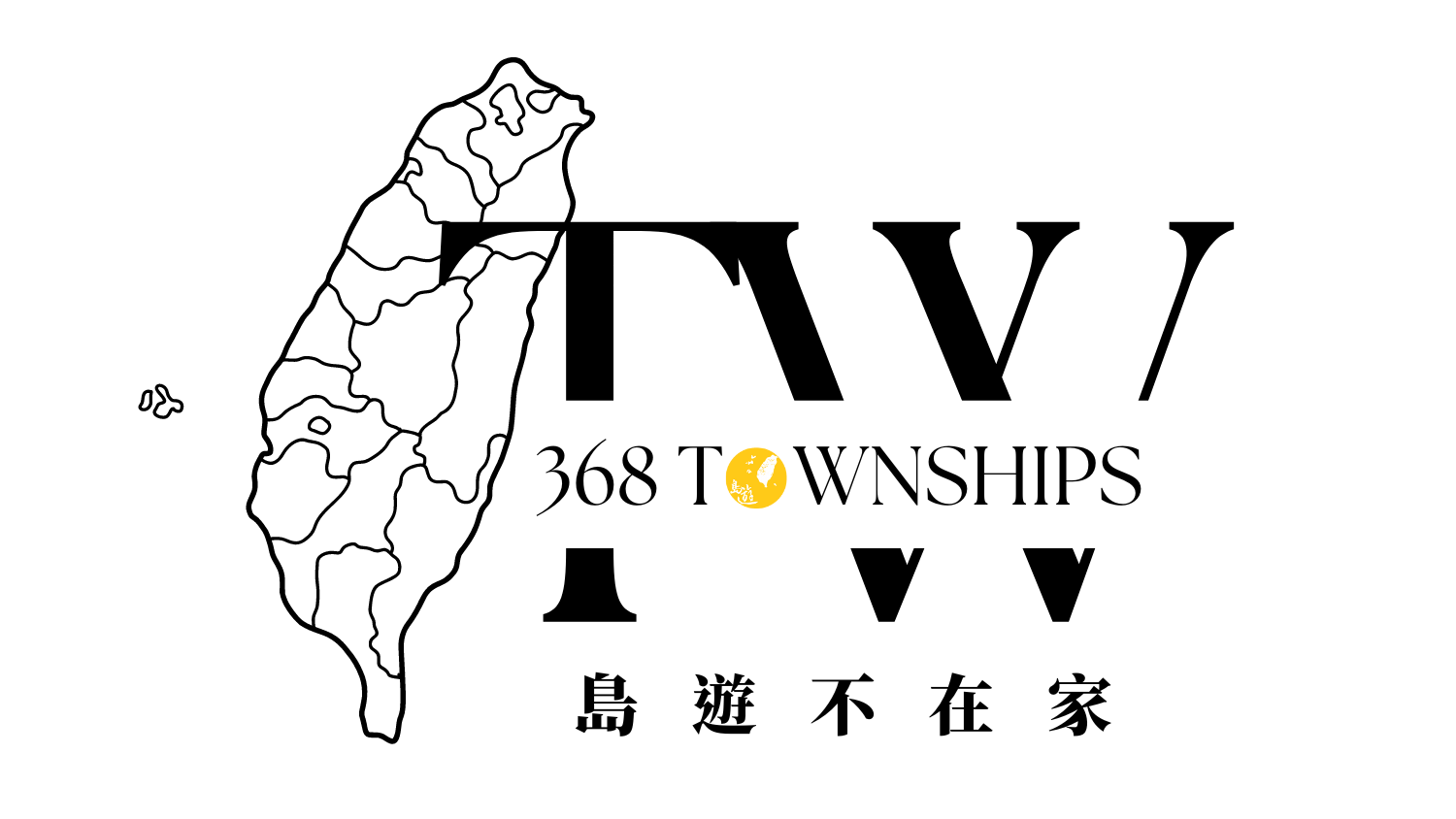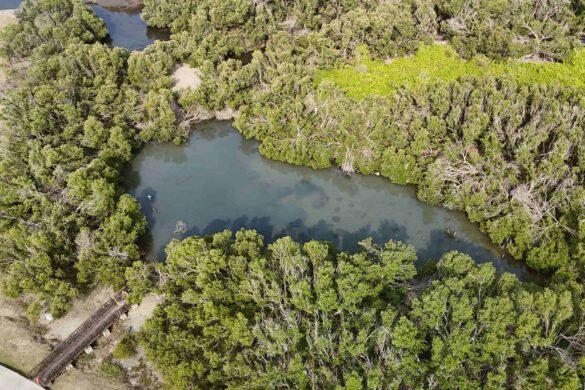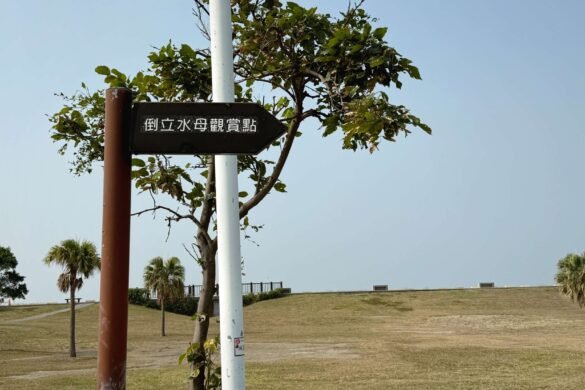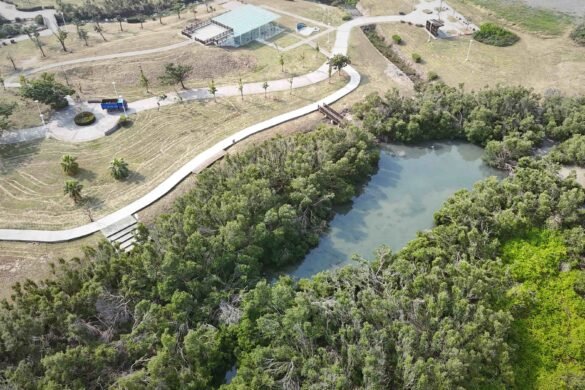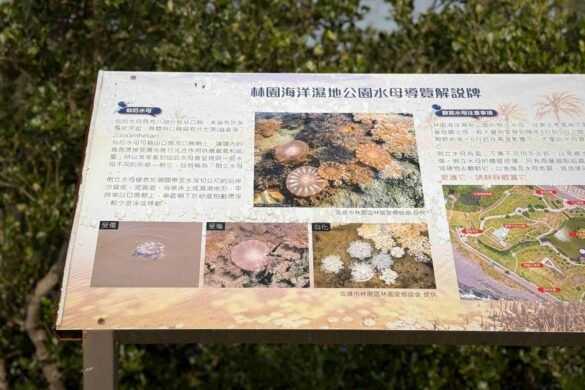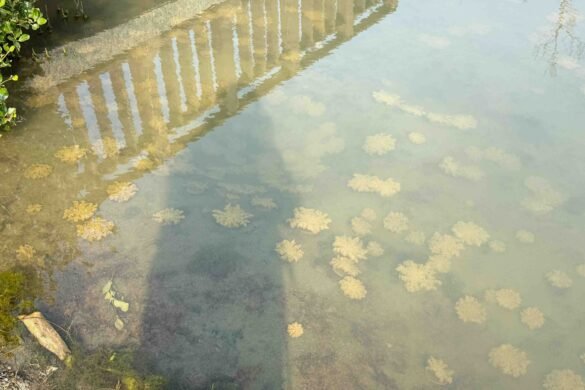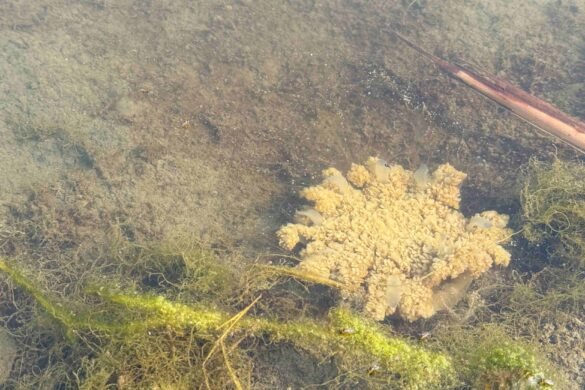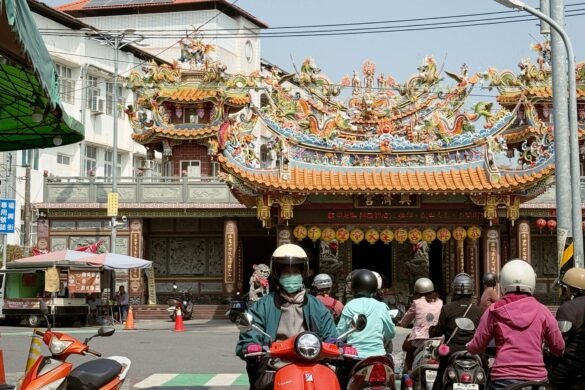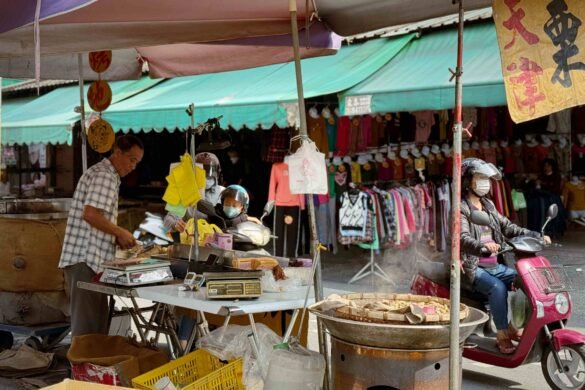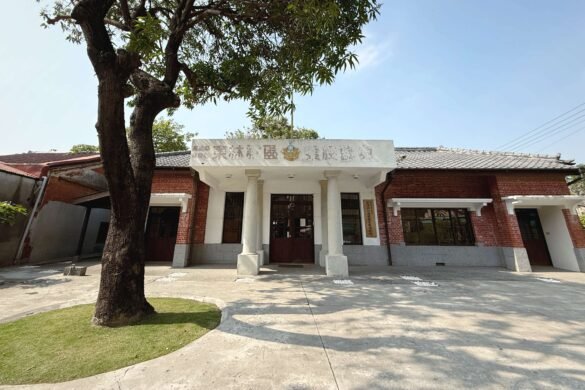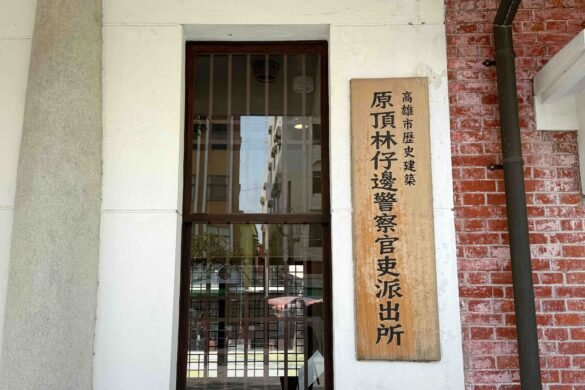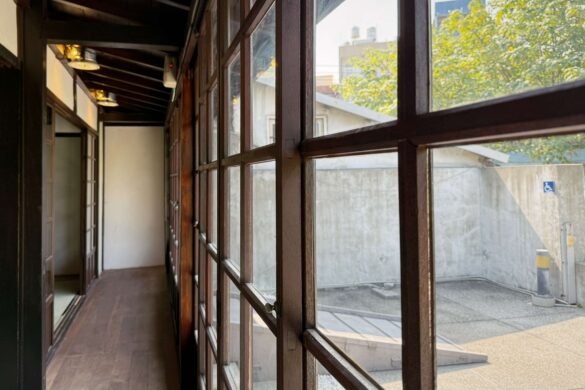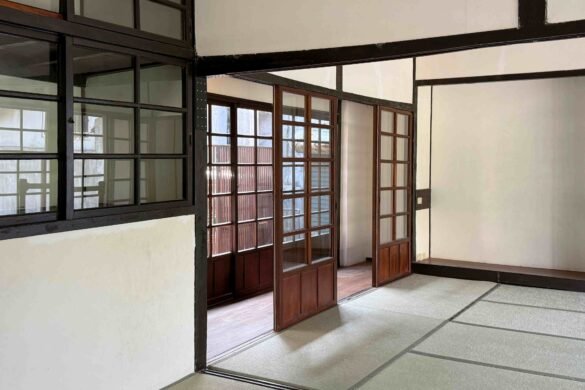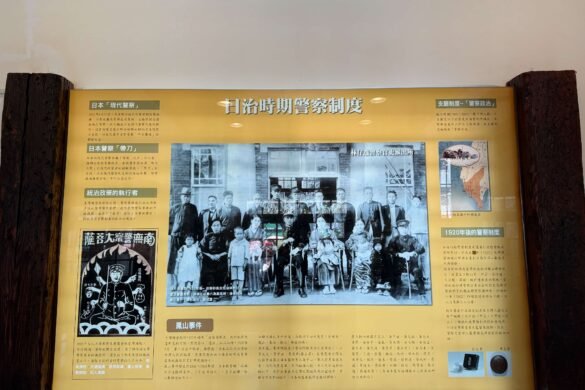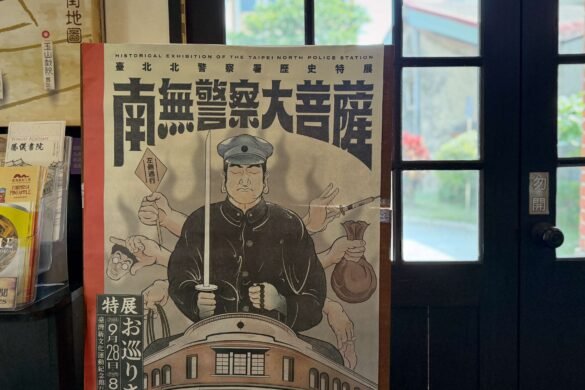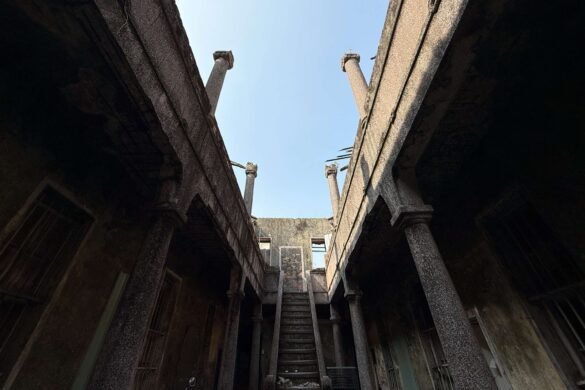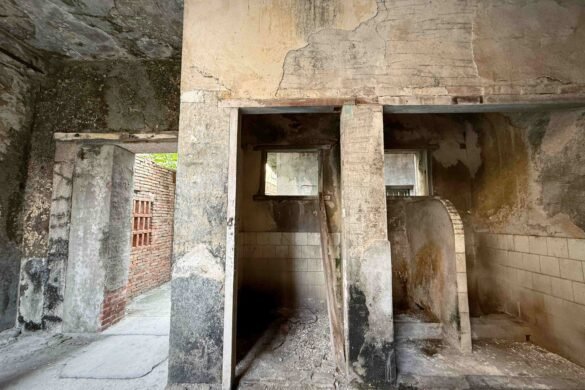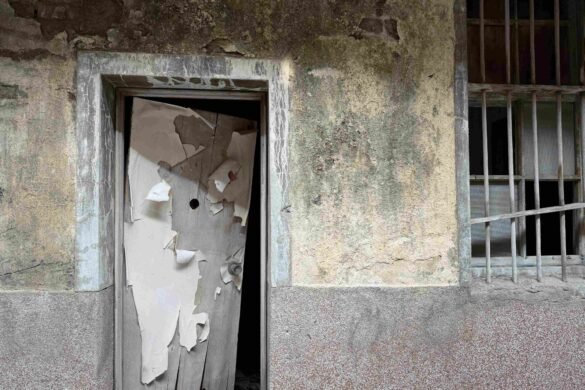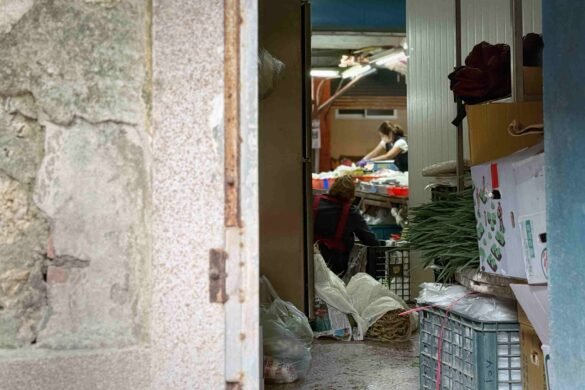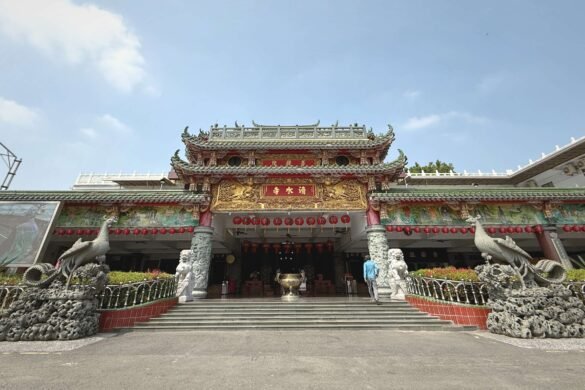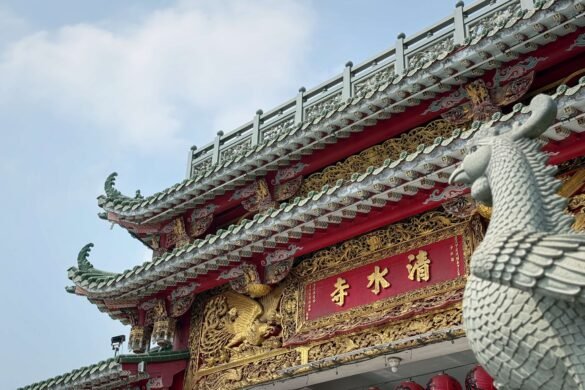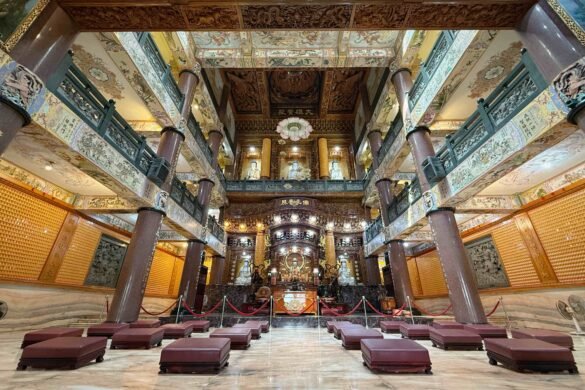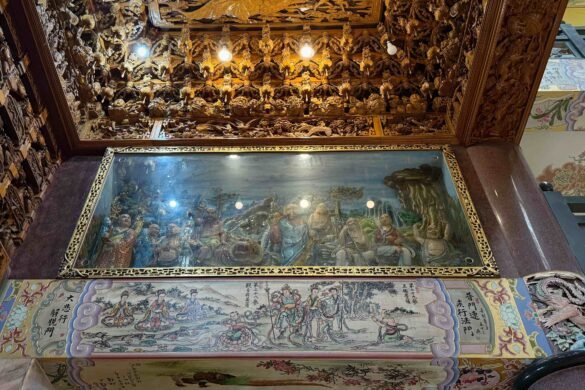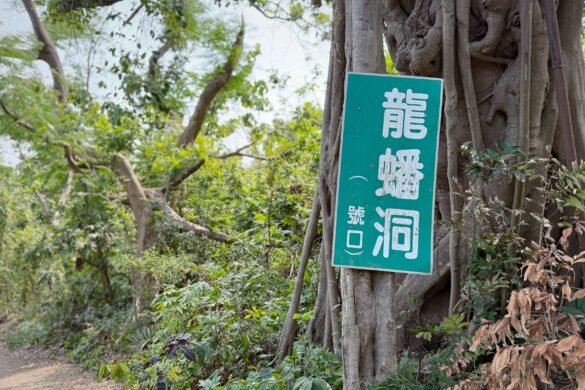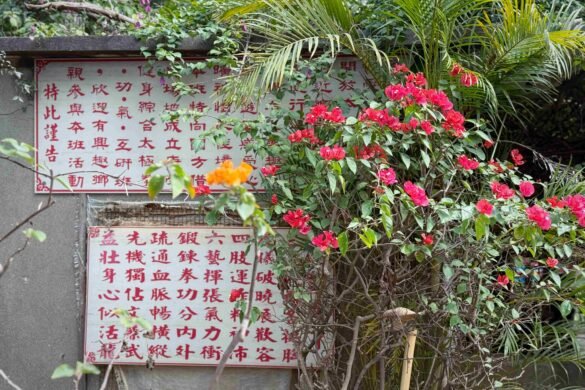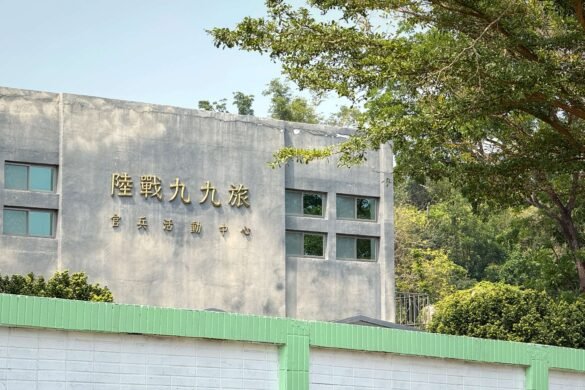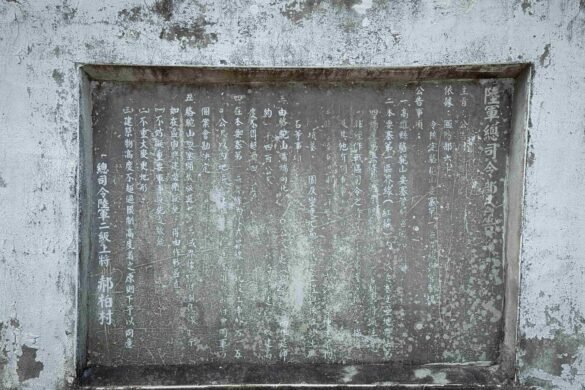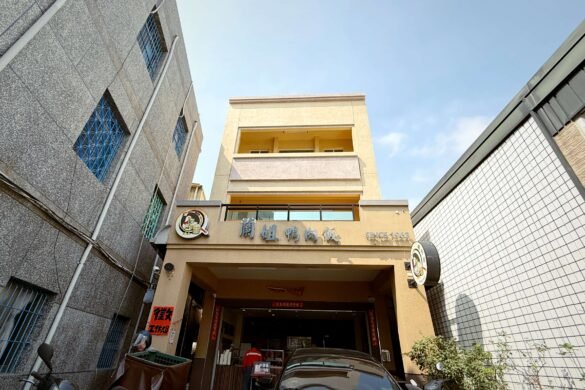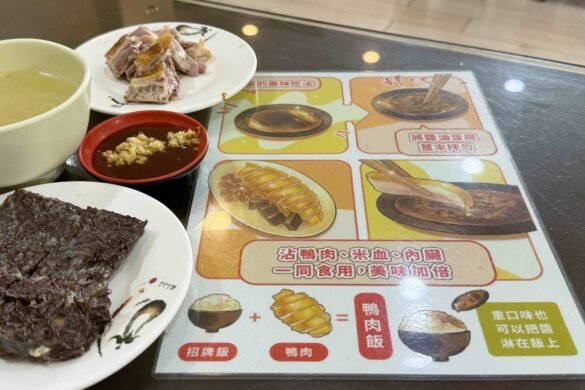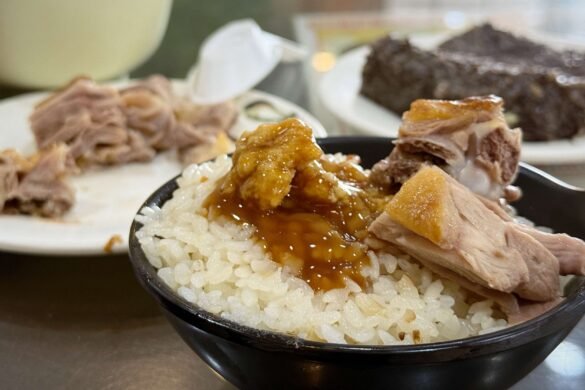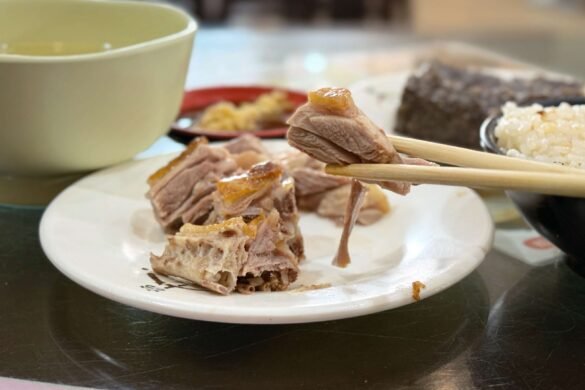From September to the following May, a rare species of jellyfish called the Cassiopea—or upside-down jellyfish—swarms into Linyuan Ocean Wetland Park. These creatures, nearly absent in the scorching summer, reappear in massive numbers during the cooler months. Linyuan is the only place on Taiwan’s main island where you can witness jellyfish floating upside down, making it the main reason I was drawn to visit. After seeing these stereotype-defying jellyfish up close, I found even more to love: the nostalgic charm of Linyuan Old Street and the irresistible aroma of Sister Lan’s Duck Rice—a visit that definitely did not disappoint.
Contents
◦ Kaohsiung Travel Guide
01|Transportation in Kaohsiung
🚄 Taiwan High Speed Rail
🚄 Kaohsiung Metro (MRT) Unlimited Travel Pass
🛵 Kaohsiung Scooter Rental - Zuoying High Speed Rail Station Pickup
🛵 Kaohsiung Scooter Rental|Kaohsiung Railway Station Pickup
02|Popular Attractions in Kaohsiung
🎫 Kaohsiung Fun Pass
🎫 E-DA Theme Park Ticket
🎫 Suzuka Circuit Park Ticket in Kaohsiung
🎫 Shoushan Zoo Tickets
🎫 Hamasen Museum of Taiwan Railway Ticket in Kaohsiung
🎫 British Consulate in Kaohsiung: Tickets and Discount Packages
🎫 National Science And Technology Museum Ticket in Kaohsiung
03|Things To Do in Kaohsiung
🚢 Kaohsiung Love River Love Boat Ticket & Cruise Guide
🚣🏻 Water skiing experience at Lotus Lake Water Skiing Theme Park
♨️ Zheng Qing Song Korean Sauna in Kaohsiung
◦ The History of Linyuan
Once called “Linzai-bian”, Linyuan earned its name for being located at the forested edge of Fengshan. During the Japanese colonial era, officials worried the name “Linbian” would be confused with a similarly named area in Pingtung. They consulted local elders, who recalled their ancestral hometowns—Guànlín and Yuánzhōng. Combining the characters "林" (Lin) and "園" (Yuan), the name Linyuan was born—an homage to their roots.
Linyuan’s flat terrain makes it ideal for farming, while its proximity to the sea, with two major harbors—Zhongyun and Shanwei—supports both fishing and aquaculture. In 1973, as part of Taiwan’s ambitious Ten Major Construction Projects, the government established a petrochemical industrial zone here, transforming Linyuan from a traditional agricultural and fishing town into a key hub of Taiwan’s petrochemical industry.
01|Elementary school students on a field trip to Cingshueiyan, Linyuan.
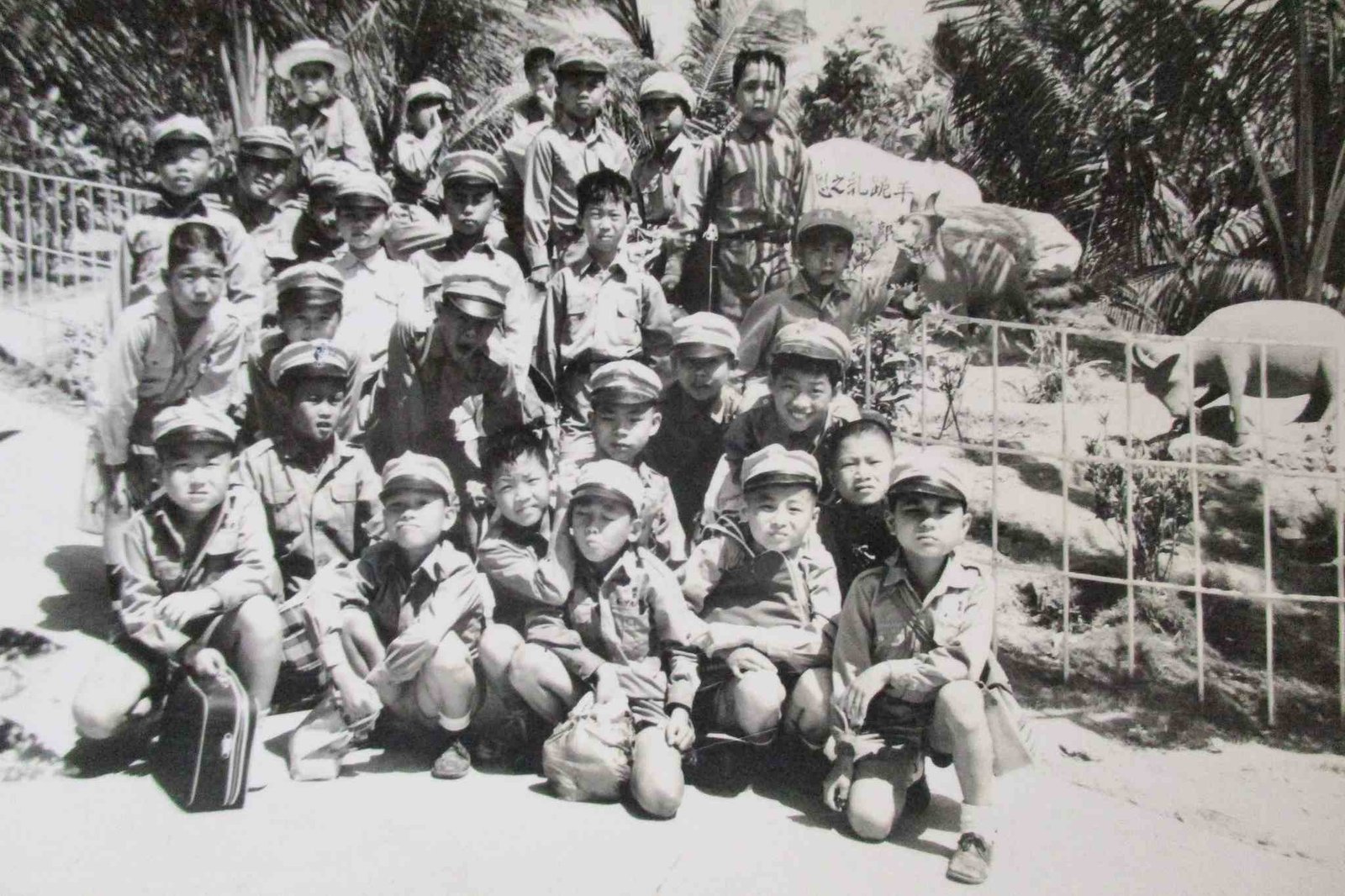
02|Lunar New Year, 1973: Three girls joyfully ride a tricycle through the streets of Linyuan, brimming with excitement and delight.
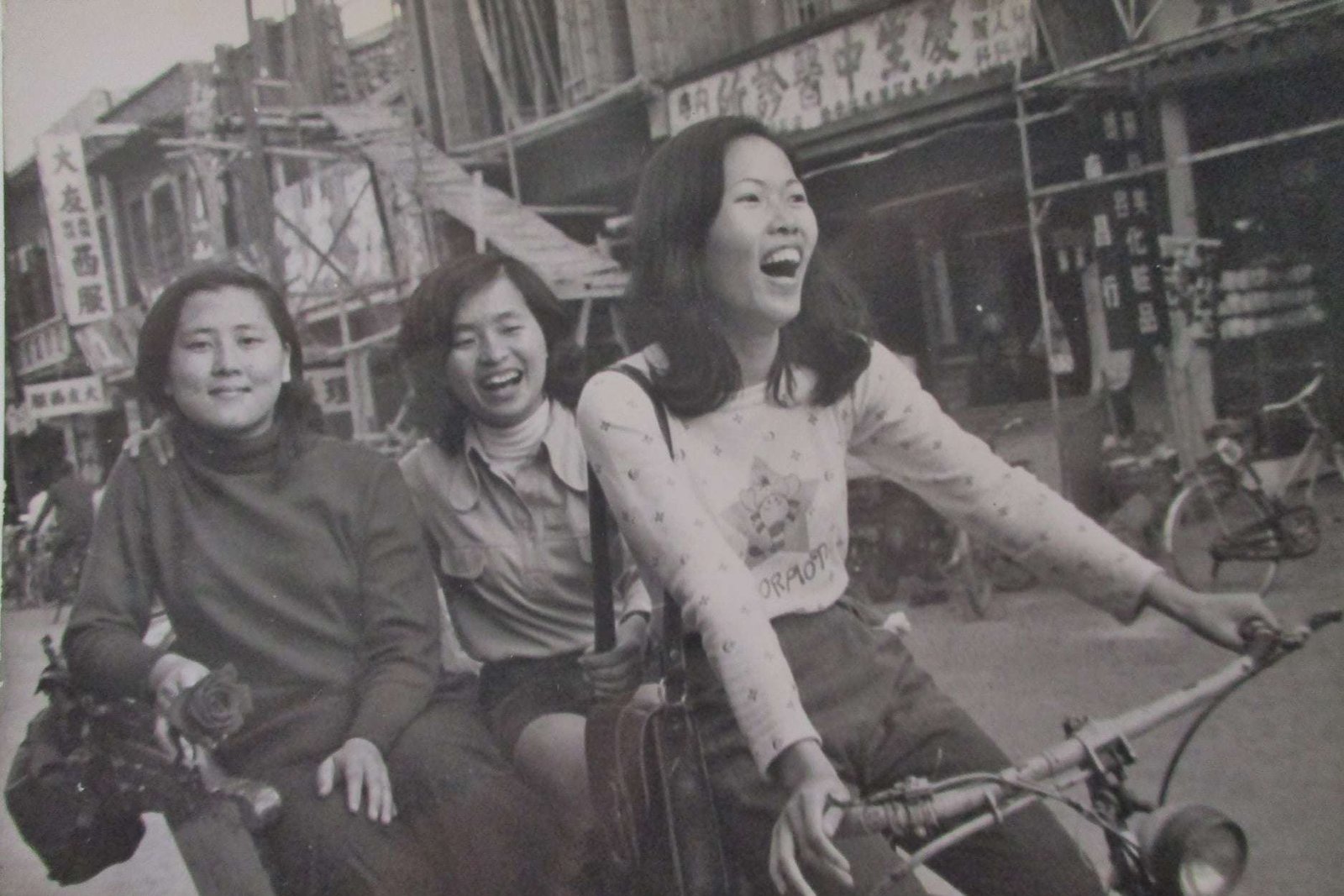
➤ Photo credits and textual references:午夜懷舊雜譚
◦ Attractions in Linyuan
01|Linyuan Ocean Wetland Park
Nestled along the coastline, Linyuan Ocean Wetland Park is a compact but ecologically rich wetland. It’s home to mangrove species like the black mangrove (Avicennia marina), and also provides habitat for a wide array of birds, plants, shrimp, crabs, insects, and amphibians and reptiles, forming a vibrant and diverse ecosystem. The park’s most unique resident is the Cassiopea, also known as the upside-down jellyfish. While this species has been spotted in lagoon environments across Kaohsiung, Pingtung, Green Island, Penghu, and the Dongsha Islands, Linyuan Marine Wetland Park is currently the only place on Taiwan’s main island where they can be observed.
These jellyfish look nothing like the translucent, dreamy ones you might imagine. They’re typically brown or pale green, with an appearance that resembles coral more than jellyfish. What sets them apart is their unique behavior—they float upside down, with their tentacles facing upward and bell facing down. This posture allows the zooxanthellae (symbiotic algae) living in their tentacles to absorb sunlight and perform photosynthesis, producing energy for the jellyfish. Nearly absent during the hot summer months, upside-down jellyfish reappear between September and the following May—and right now is the perfect season to see them in action!
Linyuan Ocean Wetland Park Banbu Rd., Linyuan Dist., Kaohsiung
02|Linyuan Old Street: Fuxing Street
Linyuan Old Street, known today as Fuxing Street, has been the heart of Linyuan’s community and a bustling traditional marketplace since the Qing Dynasty. Each morning, the street comes alive with rows of street vendors, creating a lively atmosphere filled with the sights and smells of traditional snacks, fresh produce, and everyday essentials. It remains a favorite spot for locals to shop and grab a bite to eat.
At either end of Fuxing Street stand two important temples—Xingji Temple and the Fude Temple. According to local legend and feng shui beliefs, these two temples form the symbolic shape of a carrying pole, representing stability and marking Linyuan’s historical point of origin.
Linyuan Old Street Fuxing St., Linyuan Dist., Kaohsiung
03|Former Dinglinzihbian Police Station
Located on today’s Fuxing Street, the Former Dinglinzihbian Police Station was the first official government building established in the Linyuan area. With its founding during the Japanese colonial period, the surrounding neighborhood gradually developed, with the construction of a public school, market, and village office, making it the administrative and economic center of the town.
Remarkably well-preserved, the police station’s architecture reflects the attention to detail typical of the Japanese era. One of my favorite features is the wooden window lattices and corridor in the station chief’s residence. Soft, ample sunlight filters through, creating a calm and peaceful atmosphere.
Beyond the architecture, the Kaohsiung City Government has curated displays detailing the policing system under Japanese rule and the local historical context—well worth a visit for history enthusiasts!
Former Dinglinzihbian Police Station Opening Hours: 0900-1200, 1300-1800, closed on Monday. No. 97, Fuxing St., Linyuan Dist., Kaohsiung
04|Anle Lou
The Anle Lou isn’t easy to find—I walked up and down Linyuan North Road several times before finally spotting it tucked behind a street vendor’s stall, hidden in a small alley. Built in the 1930s, this Baroque-style structure once served as a Japanese officers’ club, later transforming into a tavern and inn. In its heyday, it was a lively, dazzling place of entertainment. Over time, however, it fell into disrepair and became a ruin—until it drew new attention in recent years as a filming location for the TV drama The Pledge (A Touch of Green).
The ㄇ-shaped building blends Baroque architecture with a Japanese garden layout. The central staircase, still remarkably intact, offers a faint glimpse of its former grandeur.
Today, the weathered Anle Building connects directly to the nearby market—on one side, silence and decay settle into the corners of its old walls; on the other, the bustling cries of vendors fill the air. The contrast is striking—and left me feeling unexpectedly wistful.
Anle Lou No. 91, Linyuan N. Rd., Linyuan Dist., Kaohsiung
05|Cingshueiyan Temple
Cingshueiyan, renowned for the ancient Cingshueiyan Temple and its majestic coral reef formations, is one of the Eight Scenic Spots of Kaohsiung, steeped in legends and natural beauty. Behind Cingshueiyan Temple, numerous naturally formed caves can be found. One of them even has a spring that once flowed from within, known in the past as Lingquan Pool (“Spiritual Spring Pool”). According to local legend, a mystical figure named Lin Banxian (Master Lin the Half-Immortal) split open the rock with his sword, allowing spring water to gush forth to irrigate local farmland.
Cingshueiyan Temple was built in 1666, making it over 300 years old. The temple enshrines the Three Treasures Buddha, Guanyin Bodhisattva, and Qingshui Patriarch. As I stepped inside to pay my respects, I was surprised by the temple’s grand scale—far more magnificent than I had imagined. The thriving incense offerings spoke volumes of its enduring spiritual significance.
Cingshueiyan Temple Opening Hours: 0800-1700 No. 214, Qingshuiyan Rd., Linyuan Dist., Kaohsiung
06|Cingshueiyan Former Japanese Military Tunnel
Nestled in the hills not far from Cingshueiyan Temple, you’ll find the remains of a secret World War II-era Japanese military base—the Cingshueiyan Former Japanese Military Tunnel. This tunnel was constructed during World War II, part of the Japanese army’s defensive network built to repel potential Allied landings. Among these, the Longpan Cave area near Cingshueiyan remains remarkably well-preserved.
Just as I found the entrance and was about to begin my little adventure, a passerby called out to me: "Hey, miss! Do you have any gear? At the very least, you’ll need a helmet and headlamp—it’s not safe otherwise!" With nothing but my bare hands, I quickly realized that this wasn’t the kind of place to explore unprepared—so I saved it for another day. Although I didn’t make it into the tunnel itself, just seeing the surrounding military remnants was enough to feel the lingering presence of the old base.
Cingshueiyan Former Japanese Military Tunnel Try searching “Cingshueiyan Former Japanese Military Tunnel” on Google Maps.
◦ Restaurants and Snacks in Linyuan
01|Lan Jie Duck Rice
Opened in 1963, Lan Jie Duck Rice is a well-known local gem in Linyuan, often recommended by residents—and now, one of my favorite discoveries. The house recommendation is to order their signature rice and pair it with slices of duck or other side dishes. If you enjoy bold flavors, don’t miss their secret combo—mix soy paste with shredded ginger and drizzle it over the rice for an extra kick of flavor!
I have to say, even though their signature rice only costs NT$10, it’s the true soul of the shop. The rice is stir-fried with duck fat and crispy garlic, creating a rich aroma without being greasy at all—pure bliss for a rice lover like me. Pair it with their smoked duck, thick-cut and tender, and their handmade sticky rice blood cake, soft and deeply flavorful, and the sense of happiness is off the charts.
Lan Jie Duck Rice Opening Hours: 0940-1930 No. 143, Wenhua St., Linyuan Dist., Kaohsiung
◦ Flying Over Taiwan
*All aerial photography operations are conducted within legal airspace. During flight, regulations stipulated by the Civil Aviation Law are strictly followed, maintaining the required distance from buildings and crowds. Zooming and post-production techniques are used to ensure compliance, making the flights fully legal.
*Anyone citing these images and text must provide proper attribution. Unauthorized or illegal use of the images and text is prohibited and may result in legal liability.
◦ Other Areas in Kaohsiung
➤ Nanzih | A Land of Scholars and Prosperity
➤ Neimen | A Town Renowned for its Traditional Folk Arts
➤ Cieding | The Hometown of Mullet Roe
